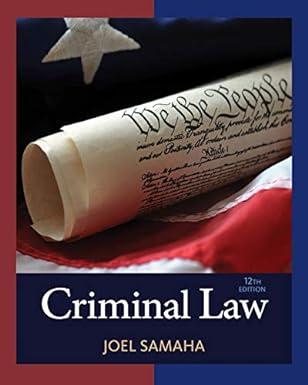On December 1, 2011, a jury convicted the defendants of criminal harassment and convicted William of making
Question:
On December 1, 2011, a jury convicted the defendants of criminal harassment and convicted William of making a false report of child abuse. On the harassment charge, William was sentenced to two and one-half years in the house of correction, eighteen months to be served with the balance suspended until December 1, 2014, with probation conditions; on the charge of making a false report of child abuse, he was fined $1,000. Gail was sentenced to two years in the house of correction, six months to be served with the balance suspended until December 1, 2014, with probation conditions, and fined $1,000. We transferred the defendants’ appeal to this court on our own motion.
This case concerns the constitutionality of the criminal harassment statute, G.L. c. 265, § 43A(a), and its application to acts of cyberharassment among others. Specifically, we consider whether a pattern of harassing conduct that includes both communications made directly to the targets of the harassment and false communications made to third parties through Internet postings solely for the purpose of encouraging those parties also to engage in harassing conduct toward the targets can be constitutionally proscribed by the statute. We also consider whether, to the extent that this pattern of conduct includes speech, that speech is protected by the First Amendment to the United States Constitution or is unprotected speech integral to the commission of the crime.
Facts
The victims, James “Jim” J. Lyons, Jr., and his wife, Bernadette, have lived on the same street as the defendants in Andover since around 2000. In 2003, the defendants acquired a tract of land abutting the Lyonses’ property and intended to subdivide and develop it. The Lyonses, along with other neighbors, objected to the proposed development, and years of litigation ensued between the parties. By 2008, the relationship between the families had become strained and communication between them was infrequent....
1. List the facts relevant to whether Gail and/or William Johnson’s were protected by the First Amendment.
2. Summarize the Commonwealth’s arguments that the Johnsons’ and their friend’s conduct was cyberharassment.
3. Summarize the Johnsons’ arguments that their conduct was protected speech.
4. In your opinion should it be cyberharassment or an exercise of First Amendment right?
Step by Step Answer:






